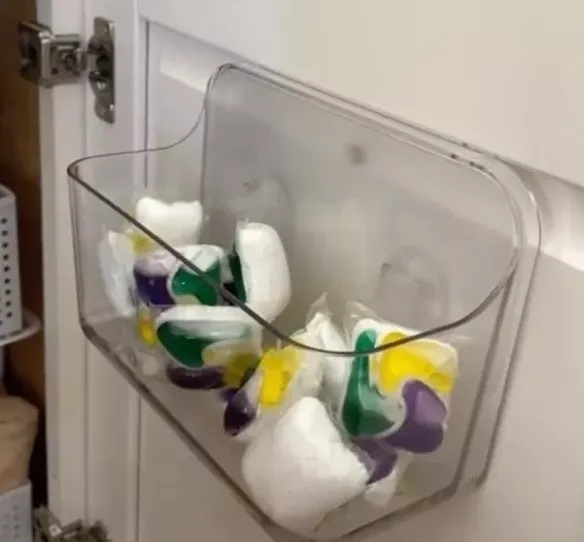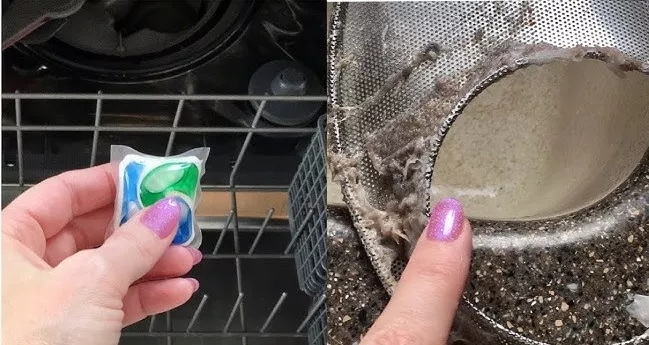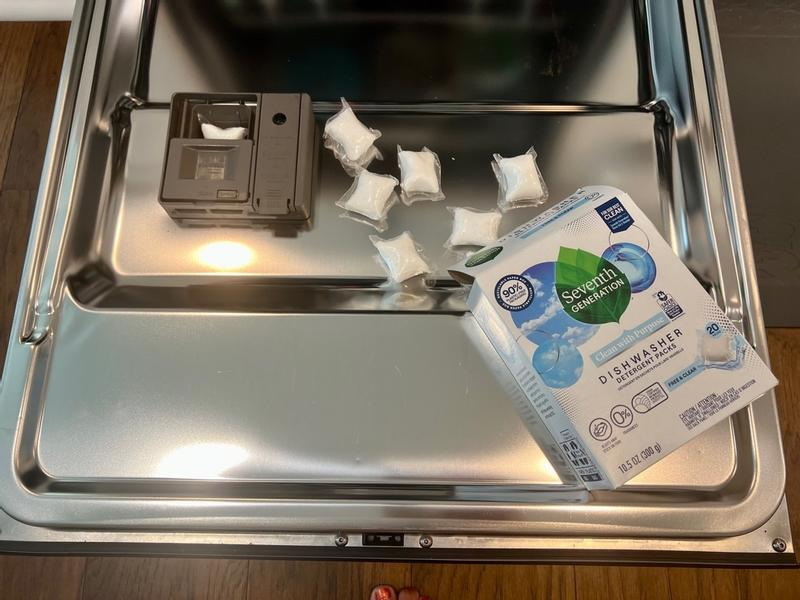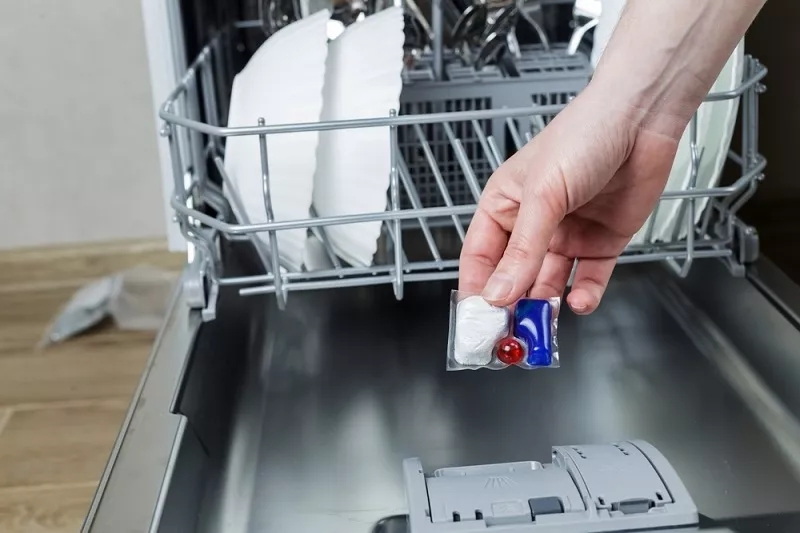Dongguan UFine Daily Chemical Co.,Ltd.
- All
- Product Name
- Product Keyword
- Product Model
- Product Summary
- Product Description
- Multi Field Search
Views: 222 Author: Tomorrow Publish Time: 10-26-2025 Origin: Site











Content Menu
● Common causes of pods getting stuck
● Symptoms and diagnostic steps
● Best practices for preventing pod sticking
● Alternative detergent options
● When to call for professional help
● FAQ
>> 1. Why does my dishwasher pod still get stuck after I load it correctly?
>> 2. How can I tell if my water temperature is too low for the pod to dissolve?
>> 3. Can using too much detergent cause pods to get stuck?
>> 4. Should I switch to a different pod brand?
>> 5. What maintenance steps minimize pod sticking over time?
Dishwasher pods are a convenient, pre-measured way to clean your dishes. Yet many users encounter a stubborn problem: the pod gets stuck during the wash cycle. This article examines why that happens, how to diagnose the cause, and practical fixes to keep pods from sticking. By understanding dishwasher design, pod placement, and cycle choices, you can improve cleaning performance and reduce frustrating jams. This expanded version delves deeper into each factor, adds practical troubleshooting steps, and includes extended maintenance routines and safety considerations.

Dishwasher pods are designed to dissolve in water as the machine fills and circulates. The outer film dissolves to release concentrated detergent, rinse aid, and sometimes other cleaning agents. Pods rely on even water flow, correct water temperature, and adequate agitation to fully dissolve. If any of these factors fail, pods may fail to dissolve or become trapped. The dissolution process is influenced by water hardness, cycle duration, and the exact formulation of the pod, which can vary by brand and product line. Understanding these underlying mechanics helps you tailor loading, cycle selection, and maintenance to your specific unit.
- Incorrect pod placement
If the pod is placed in a location where it can get blocked by rack tines, dishware, or a utensil basket, it may not dissolve properly. Pods should be placed in the pre-way insert or detergent dispenser according to the manufacturer's guidance. Some models require you to position the pod directly in the detergent cup; others expect it to be placed in the main wash compartment. Misplacing the pod can lead to immediate or delayed dissolution.
- Faulty dispenser door
The dispenser door must open promptly at the right time. If it sticks or fails to release, the pod may remain behind the door or get lodged in the dispenser housing. Over time, hinges can wear, springs can weaken, or residue can gum up the mechanism, obstructing full opening.
- Overloaded or poorly loaded dishwasher
Overloading or placing large items in a way that obstructs water spray can cause pods to stay in one spot rather than circulate, leading to incomplete dissolution. Tall items can block spray arms, while bowls and spoons can shield portions of the detergent compartment from incoming water. Proper spacing ensures the detergent is exposed to hot wash water throughout the cycle.
- Water temperature and pressure issues
Detergents need hot water and sufficient flow to dissolve. If the water is cool or if spray arms are clogged, pods can fail to dissolve or get stuck. Mineral buildup from hard water can also affect spray arm rotation and water jet strength, reducing overall cleaning performance.
- Hardened or defective pods
Some pods may be defective or prone to dissolving slowly, especially in cold water. Expired or moisture-exposed pods can also break apart and cling to surfaces. Humidity can degrade certain formulations inside the packaging, reducing effectiveness even before use.
- Detergent dispenser problems
If the detergent dispenser is damaged, sticky, or blocked by residue, it may not dispense or release the pod correctly. A misadjusted latch or worn seal can cause partial openings, trapping the pod in the cup or preventing full release.
- Dishware residues
Food remnants, starches, or grease can coat items differently, altering water flow and pod dissolution in ways that trap the pod. Sticky residues can also cling to the pod as it dissolves, creating a physical barrier that prevents full dissolution.
- Pod remains intact after cycle ends
This often points to a dispenser issue, a misloaded rack, or inadequate water temperature. Inspect the detergent cup for cracks, residue, or moisture that might hinder release.
- Pod dissolves partially but leaves residues
Suggests water temperature is insufficient or spray arms are blocked. Check for mineral buildup on the heater element or spray arms, and verify that the chosen cycle is appropriate for the soil level.
- Pod gets jammed in the dispenser well
Indicates a malfunctioning dispenser door or misalignment of the detergent slot. Look for cracks, warping, or foreign objects that prevent smooth operation.
- Dishes come out unclean
Even if the pod dissolves, poor cleaning may reflect clogged spray arms, insufficient water pressure, or wrong cycle setting. Inspect filters and ensure proper rinse aid usage.
- Error codes or unusual noises
Codes related to water inlet, pump, or motor can signal broader mechanical issues that affect pod dissolution indirectly by reducing wash effectiveness.

- Check loading and placement
Place the pod in the designated detergent cup or follow the manual's placement instructions. Ensure dishes are not blocking the dispenser area or the detergent path. Arrange items so that tall pieces do not shield the dispenser or spray arms.
- Inspect and clean spray arms
Remove debris from spray arms and ensure holes are unobstructed. This promotes even water distribution and helps the pod dissolve properly. Check for calcium or mineral buildup that can impede rotation.
- Verify water temperature
Run a test cycle with a sanitize or heavy-duty setting that heats water to the manufacturer's recommended temperature (often around 120–140°F/49–60°C). If water doesn't heat correctly, consider service. You can test water temperature at the outlet with a thermometer, or run a diagnostics cycle if your model provides one.
- Clean the dispenser
Wipe the dispenser door and cup to remove sticky residue. Ensure the latch or hinge moves freely and the door opens fully during the cycle. If the dispenser is prone to sticking, you may need to replace the door assembly or apply a manufacturer-approved lubricant to the hinge.
- Avoid overloading
Reduce load size, and ensure tall items don't block the detergent dispensing area or spray arms. Use the top rack for lighter, more delicate items and the bottom rack for heavier dishes to improve spray distribution.
- Use fresh or recommended pods
Check expiration dates and store pods in a cool, dry place. If a lot of pods fail to dissolve, try a different brand or type that's compatible with your dishwasher. Some users find blends formulated for high-efficiency machines dissolve more reliably.
- Check for mechanical issues
If the dispenser door, rack, or hinges feel loose or misaligned, professional service may be required to restore proper operation. Also verify the water inlet valve and pump are functioning correctly, as problems here can impede wash performance and indirectly affect pod dissolution.
- Consider cycle-specific adjustments
If you routinely run shorter cycles, the pod may not have enough time to dissolve fully. Switch to a longer cycle that includes a pre-wash or extended wash phase to allow sufficient dissolution and circulation.
- Run routine cleaning cycles
Periodically clean filters, pump, and spray arms to maintain optimum water flow. A buildup-free machine ensures consistent temperature and pressure throughout cycles.
- Use proper loading configurations
Follow the dishwasher's loading guide to ensure the detergent compartment is accessible and not blocked. Distribute items evenly to prevent clustering that can shield the pod from water exposure.
- Maintain dishwasher seals and gaskets
Wipe seals to prevent moisture buildup that could affect dispenser operation and pod dissolution. Inspect door seals for cracks or tearing and replace as needed.
- Keep water heater and plumbing in good condition
A properly functioning water heater ensures water reaches the right temperature for full pod dissolution. Address mineral scale buildup in pipes and valves that could impede flow.
- Use compatible pods
Some brands perform better with specific models or water conditions. If you have particularly hard water, consider pods formulated for hard water or add a rinse aid to help dissolution and drying.
- Powder or liquid detergent
Some users prefer pouches or cups; however, ensure the product is specifically designed for automatic dishwashers and compatible with your model. Liquid detergents can sometimes be less convenient for fully enclosed pods but may offer better dissolution in certain machines.
- Pods from reputable brands
Choose trusted brands with consistent dissolution performance and reviews indicating reliability with your dishwasher. Consider trying a brand with a reputation for excellent dissolution in hard water if applicable.

- Repeated pod sticking despite following guidance
There may be a fault in the dispenser mechanism, control board, or water inlet valve. A technician can diagnose sensor, motor, or valve issues that reduce wash efficacy.
- Leaks around the dispenser or door
Could indicate gasket damage or door alignment issues. Addressing leaks promptly prevents corrosion and damage to electrical components.
- Unusual noises or error codes
May reveal a larger mechanical or electrical problem requiring service. Continuous error codes can indicate failing sensors or actuator assemblies.
- Persistent failure across multiple cycle types
If pods fail to dissolve in multiple detergents and cycles, the issue is unlikely to be the product and more likely a systemic machine fault.
- Inspect seals, hinges, and door latches
- Clean spray arms and filters every 1–3 months
- Run at least one cleaning cycle monthly to prevent buildup
- Monitor detergent dispenser for signs of wear or sticking
- Test heater and thermostat periodically if you have the know-how
- Use a water conditioner or descaler if you have hard water, following manufacturer recommendations
Pod sticking in dishwashers results from a mix of loading practices, dispenser reliability, water temperature and pressure, and pod quality. By ensuring proper placement, keeping the dispenser and spray arms clean, maintaining appropriate water temperature, and avoiding overloading, you can minimize pod sticking and improve cleaning results. Regular maintenance and using recommended products tailored to your model will help sustain consistent performance. If issues persist after following these steps, professional service may be the most reliable path to restore full functionality and prevent recurrence.

The dispenser mechanism or water circulation may be failing, or spray arms could be clogged. Inspect the dispenser and spray arms, and run a cleaning cycle.
Run a test cycle with the dishwasher's sanitize or heavy-duty setting; if the water remains cool, the heater or thermostat may be faulty and require service.
Yes. Overloading with detergent can leave excess residue that interferes with dissolution. Use the recommended amount per cycle.
If pods consistently fail to dissolve, trying a different brand or type compatible with your model can help. Check for reviews noting reliable dissolution.
Regularly clean filters and spray arms, wipe the dispenser lid, ensure proper loading, and run a monthly dishwasher cleaning cycle.